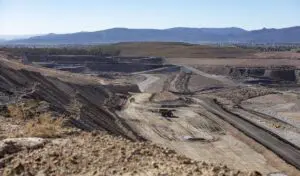It was fascinating to watch the conservative commentators in mainstream media twist themselves into a giant knot over the closure of the Hazelwood power station in Victoria – a veritable economy killer that will lead to high prices and the death of all industry if I understand them correctly.
Hang on for a moment. What did Engie say were the reasons for the closure?
“Hazelwood power station has been operating in difficult market conditions, with lower electricity prices and a surplus of electricity supply in Victoria State,” it said in its announcement.
This is not a reason that has been plucked from the sky. For years the coal-fired generators have been arguing that there is a massive surplus of capacity – 7,000MW – in Australia’s National Electricity Market. That was one of the reasons they thought they should be paid to close one of the ageing power stations.
What did that massive over-capacity do? It lowered electricity prices below where they would otherwise be. That’s the impact of renewable energy too – it reduces wholesale electricity prices.
The Hazelwood owners hung around for an exit payment long enough, but could no longer stand either the costs of upgrading their boilers, or the reputational damage of keeping the dirtiest power station open for any longer.
Those free-market champions in the conservative commentariat demand that government should have done something about it. It’s an argument they have been prosecuting about South Australia, where they blame the blackout on the absence of a coal-fired power station and the insidious nature of wind energy.
But the Northern brown coal power station in Port Augusta could not operate at the average price of wholesale power in South Australia either – despite it having the highest price of electricity in Australia.
It touted around contracts to big electricity consumers for prices of between $50 and $60/MWh, but there were no takers. So, having just about exhausted its economic reserves of brown coal, it closed.
So, just to sum up – two of the dirtiest coal-fired generators in Australia closed because the wholesale electricity price was not high enough for them to continue, and no business consumer wanted to buy the output from them directly.
Hmmmm. Now, how does that match with what the conservative types are telling us?
The closure of Hazelwood will have no impact on energy security either, the Australian Energy Market Operator has made clear. The grid will still operate at its reliability rate of 99.998 per cent – which means it allows for 11 minutes a year of outages.
It’s a formula that has made for a reliable but highly priced and gold-plated grid – so much so that, as Bruce Mountain points out today, consumers can get cheaper electricity from a combination of solar and battery storage than they can from the grid. And that is really going to throw a cat amongst the pigeons that are bleating about the cost to consumers.
That prospect is frightening to the generators that remain, and to the network operators – which is why they are now calling for more payments (capacity payments) to stop them closing. First they wanted money to close, now they want money to stay open. It’s hard to keep up.
It comes in a new round of fear-mongering that is designed to help them maximise their profits from coal-generation for as long as they can.
Federal environment minister Josh Frydenberg has bought into it, and warned of possible supply shortages in the summer of 2017/18. AEMO says it may well be that Victoria has to import power from other states at certain times – but that is what the grid is for, to transport electricity from the supplier to the customer.
Interestingly, its analysis took no account of renewable energy – either wind or solar. Consumers can be thankful that rooftop solar is clipping and narrowing the peaks: that is removing most of the high-priced events that used to be cream on the fossil fuel generators’ milking of the electricity market.
To be sure, coal generators will make merry before more renewable energy is built in Victoria. Deutsche Bank estimates that AGL will make an extra $150 million in profits from its Loy Yang A generator for every $15/MWh increase in the wholesale price in Victoria.
Engie’s Loy Yang B might make nearly as much, helping the company pay for its severance and remediation package at Hazelwood.
But watch the generators now: the calls for a stop to state-based renewable energy targets, and for those new “capacity payments” for fossil fuel generation will only intensify – supported, no doubt, by loud voices from the free-market conservatives in media land.








